Traditional Croatian Recipes: Tašci / Taške for Good Friday
April 7, 2023 - It is Good Friday. In Croatia, that could mean a few things. If you are religious, you are likely to go to church and follow the Way of the Cross (beautiful traditions tied to that, for example, Za Križen in Hvar), you might be fasting, or you just might be realizing that Easter is only two days away. YouZa Križen in Hvar), you might be fasting, or you just might be realizing that Easter is only two days away, and you need to get started on your food prep. If you live in Slavonia and have a grandmother, you are more than likely to be served tašci, also known as taške, also known as tačkrle, also known as "don't bother preparing them if you're not making a hundred."
Following the Catholic tradition, most households in Croatia will be fasting or at least staying away from meat on Good Friday. Having moved away from the religious rigidity, what ends up happening on days like that (another prime example being Christmas Eve), is that the finest fish meals end up being prepared, along with desserts, to make it a little bit more special. And you end up a long way from fasting. For that purpose, as we said, none is better than the traditional little pockets of happiness that are taške. They taste the best if made by grandmas or at least mothers, but all versions are more than good enough. Though the recipe is simple, the preparation is quite labor intensive and does take a little bit of time, so make sure to account for that.
Taške is a simple dough filled with jam, cooked and rolled in poppy seeds or ground walnuts. Enjoyed by the dozen. They originate from Slavonija and Baranja but are also popular in parts of Hungary and Serbia. The dough can be just flour and water or a potato dough like gnocchi. It would always be the simplest version in my family, so that is the recipe I'll share today.
Dough
- flour
- water
- salt
- optional: egg
Filling
- jam
Toppings
- ground walnuts + sugar
- toasted poppy seeds + sugar
* The traditional filling is a special type of plum jam, which is just plums and a little sugar cooked for hours in the oven - once it cools in the jars, it hardens and becomes perfect for fillings as it doesn't leak out during cooking.
Preparation
1 Knead your dough with a pinch of salt and enough water to bind it together. Add one egg for extra elasticity and flavour, but feel free to skip. The consistency should be hard but uniform. There are no exact measurements; you'll use more or less flour depending on how many people you're trying to feed (about 1 kg used for a family of 6 with plenty of leftovers).
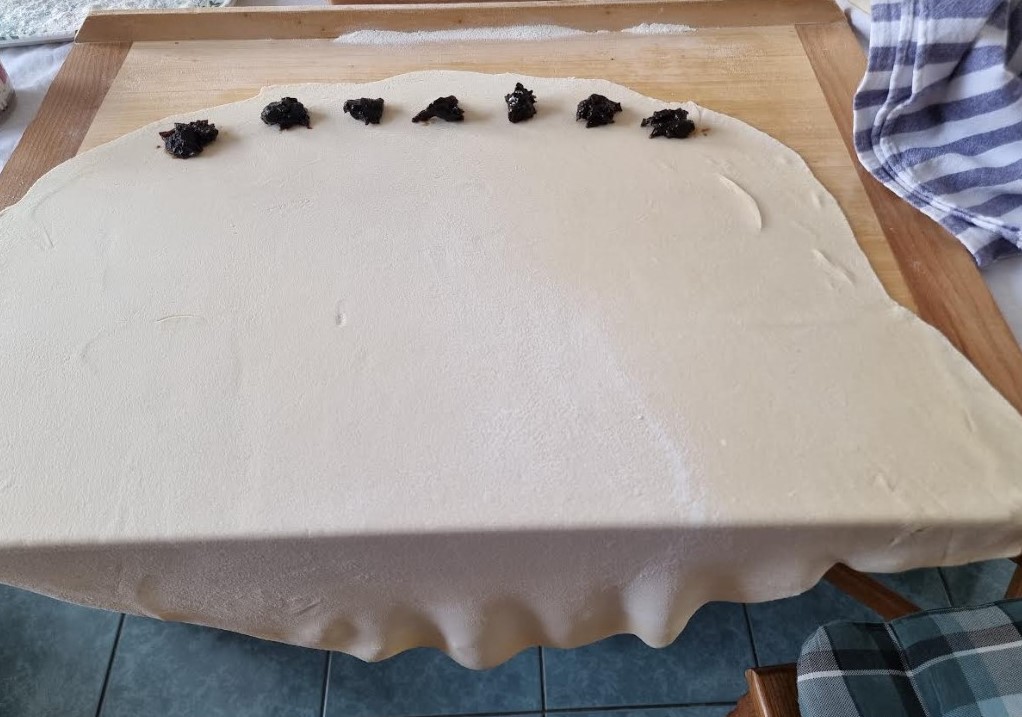
2 Dusting it with flour, roll out the dough into thin sheets (about 2-3 mm thick), fill with jam, folding it over row by row. Tip: glue it together using a little water between the individual taške.
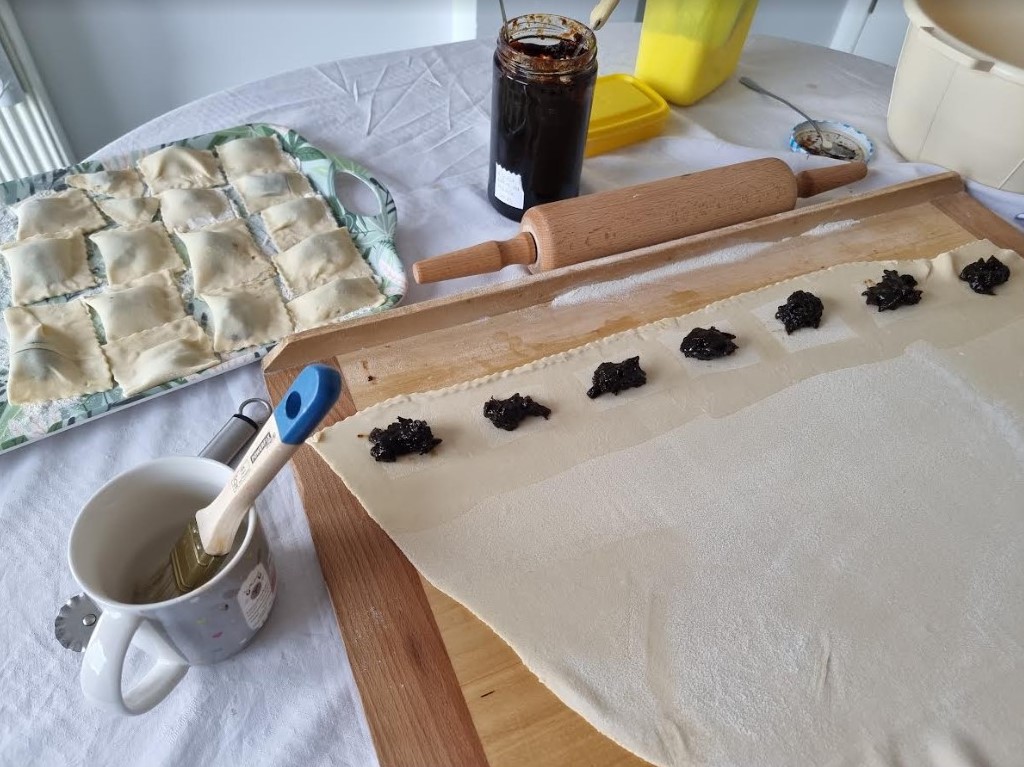
3 Cut into squares, pinching the ends together so your filling stays in place during cooking. During the process, keep your prepared taške separate so they don't stick together (flour your trays and use baking paper between layers).
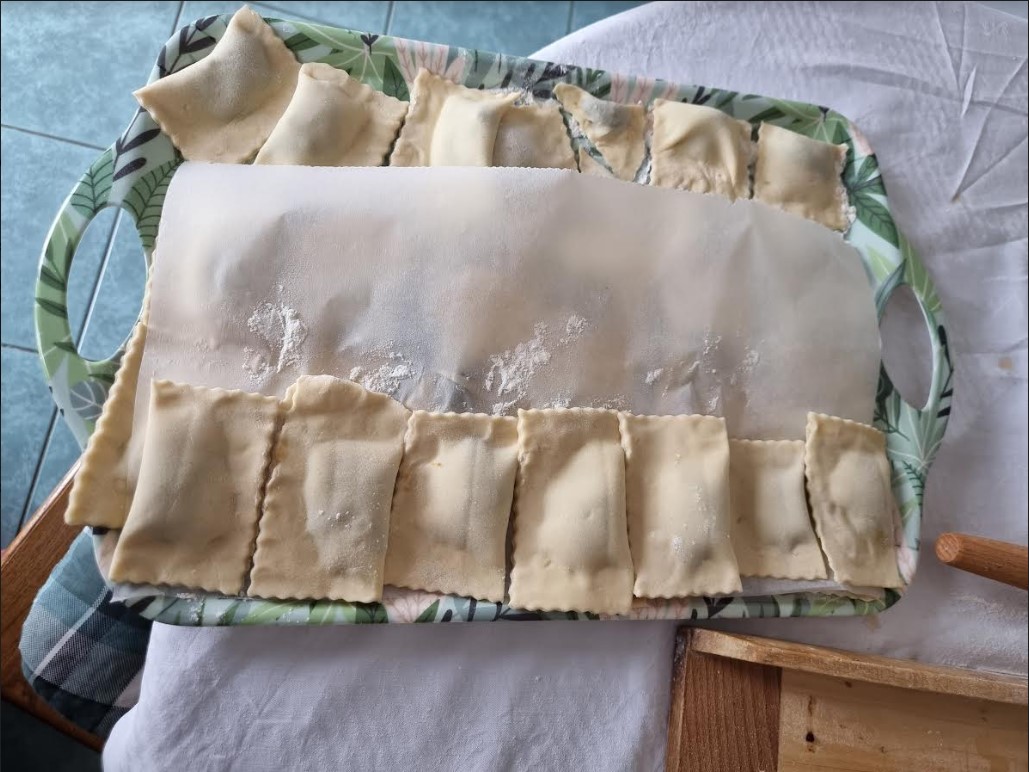
4 Bring your biggest pot of water with a pinch of salt to boil. Taške should be cooked in small bunches, about six at a time, but if (like me) you're trying to cook about 90 of them, feel free to dump as many as you can comfortably fit into the pot. They are cooked in rapidly boiling water very briefly, for a minute or two after they've risen to the surface.
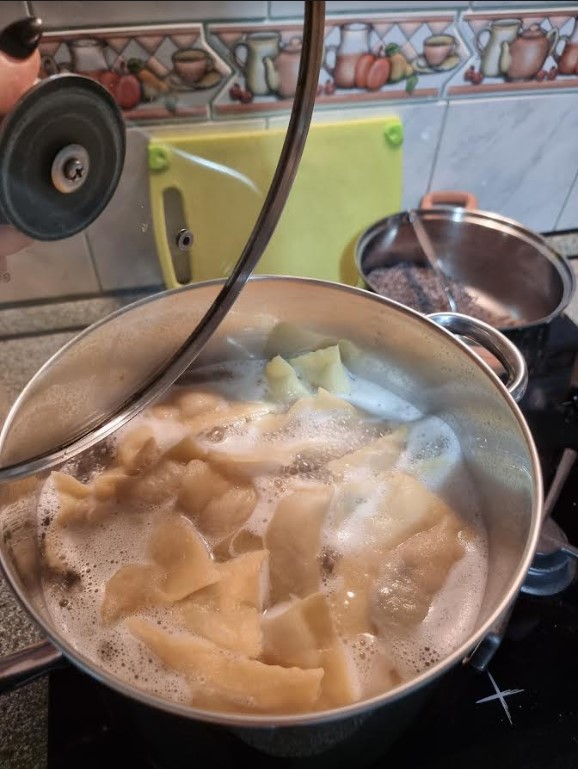
5 Take them out and let cool for a few minutes, after which you can layer them into glass or ceramic dishes with their toppings - ground walnuts with a bit of sugar or toasted poppy seeds with sugar.
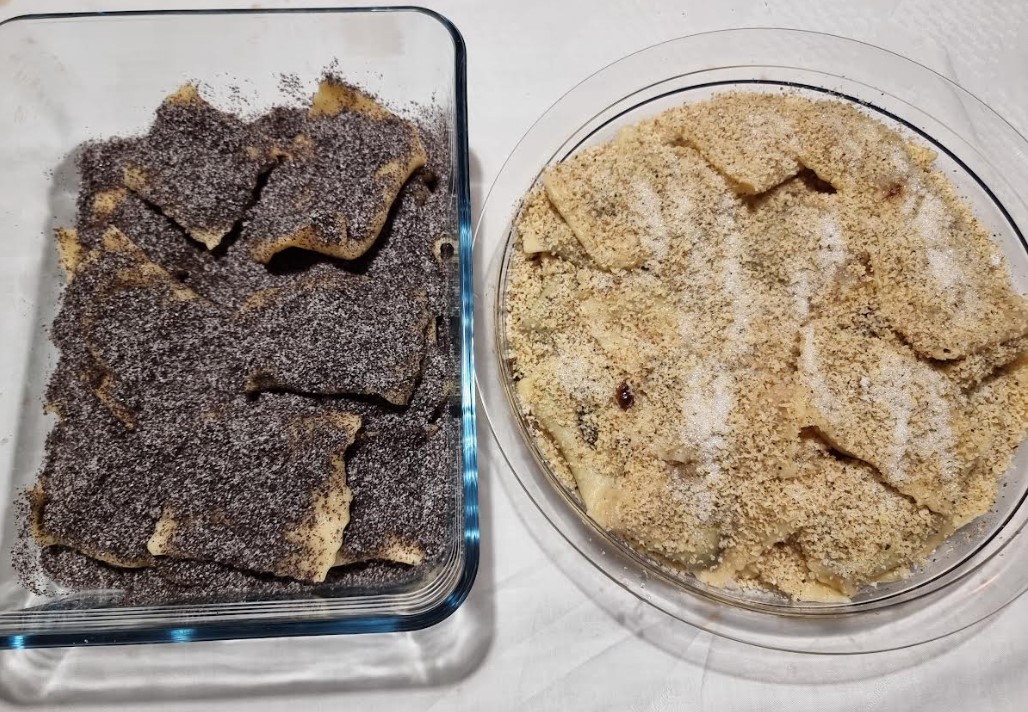
Taške are best eaten warm, following a nice fish dinner.

For more, make sure to check out our dedicated Lifestyle section.
Bread Club Zagreb to Represent Croatia in Its First Baking Olympics
January 20, 2023 - Bread Club co-owners Darko Kušić and Andrija Pernar will represent Croatia at an important baking competition this weekend in Rimini, Italy. They're going with traditional Croatian recipes, soparnik and čvarkuša.
As Jutarnji writes, along with masters of gelato and coffee, SIGEP, the World Dolce Expo, also hosts an international competition, a sort of Olympic Games of the baking world. Nine countries are participating this year, and one of them is none other than Croatia. The nation's representatives are a team from the super popular Zagreb bakery Bread Club - its co-owners Darko Kušić and Andrija Pernar.
"The whole thing works on the principle of invitations, and Croatia was invited to participate for the first time this year. All competitors must be members of the Richemont club; that's one of the conditions," Andrija Pernar told Jutarnji in a short phone conversation just before leaving for the competition.
The competition will be held over two days, and on the first day, the contestants only have an hour to prepare their dough. The next day, they have to finish the products in five categories in only eight hours.
"We will make ciabatta, one of the default categories, and it is made to exact weight, according to the Italian recipe. There is no compromise. Another category is freestyle bread, and we will make our porridge bread, a bread inspired by proja (corn meal), our white Grandfather's bread, and another bread with horsebean protein. In the tarts category, we will make two sweet varieties, inspired by the Croatian poppy seed roll and the Dubrovnik rožata, as well as two savory kinds, which we have made based on the traditional recipes of Viška pogača and Soparnik.
We will also make Margherita pizza, along with our version with cheese, sour cream, and kulen; while some of our other dishes include čvarkuša, a bread roll with Croatian bacon and cheese, Croatian kiflice and a sandwich with škripavac cheese and Nin šokol (dried cured pork neck). We decided to focus on tradition; we believe that to be the recipe for a good ranking," explained Darko Kušić.
They added that the grading system is quite strict and look at every detail. Each product must be precisely the specified weight. Precision is key, and any deviation is penalized with negative points.
For example, the team of bakers from China has been preparing for this for the last year, and they're sending three teams to Italy in case the first line-up is prevented from performing for some reason. This only goes to show how serious this competition is. By the way, the Chinese representatives also designed a replica of their kitchen just for this competition to make their work easier.
"Everything is done from scratch; we are not even allowed to bring a mature starter. We will knead the puff pastry dough on the first day and laminate it on the second. We must ensure we get it all done in eight hours, which is quite challenging. Given that we only recently opened our new production facilities, along with another branch, we have only been practicing for the competition for the last two months", commented Darko and Andrija and added that they believe their biggest competition is the Italian team. "We met them, and they are absolutely the masters of the craft," they added.
In the end, Jutarnji asked if they planned to keep any products from the competition in Bread Club's permanent offer.
"Extremely intense months are behind us, during which we prepared and tested new products with our team. All our products are made with filigree precision and with special love, so we are looking forward to putting everything we worked so hard on into production," they said. Good luck to Bread Club, and we're looking forward to tasting more of their world-class pastries soon!
For more, make sure to check out our dedicated Lifestyle section.
Exploring Croatian Recipes: Christmas Baking - Orascici (Little Walnuts)
December 11, 2022 - Christmas baking in Croatia starts as soon as December rolls around. The goal is for the Christmas dessert table to be as bright and colourful as possible, full of cookies and cakes and everything in between. Boxes of various little treats are gifted to family, freinds, nieghbours, brought to office parties, schools and kindergartens. Sweet treats are a key component of Croatian Christmas traditions. They bring a lot of joy to both the visitors and the hosts, and the process of baking them is the perfect tool for families to come together and enjoy moments of bonding. Today we explore one of the oldest Croatian recipes to find itself on Santa's list - orascici.
Orah means walnut in Croatian. While walnuts are the main ingredient used to make them, the diminutive orascic (little walnut) refers to the shape of these treats. The cookies are baked in a special type of metal mold which has the shape and the texture of a walnut half. The halves are then filled and glued together to form a whole nut. It is slightly ironic that they are called little though, since most of them turn out bigger than actual walnuts. They are incredibly fun both to make and look at, and no matter how many there are, always the first kind to vanish from the plates.
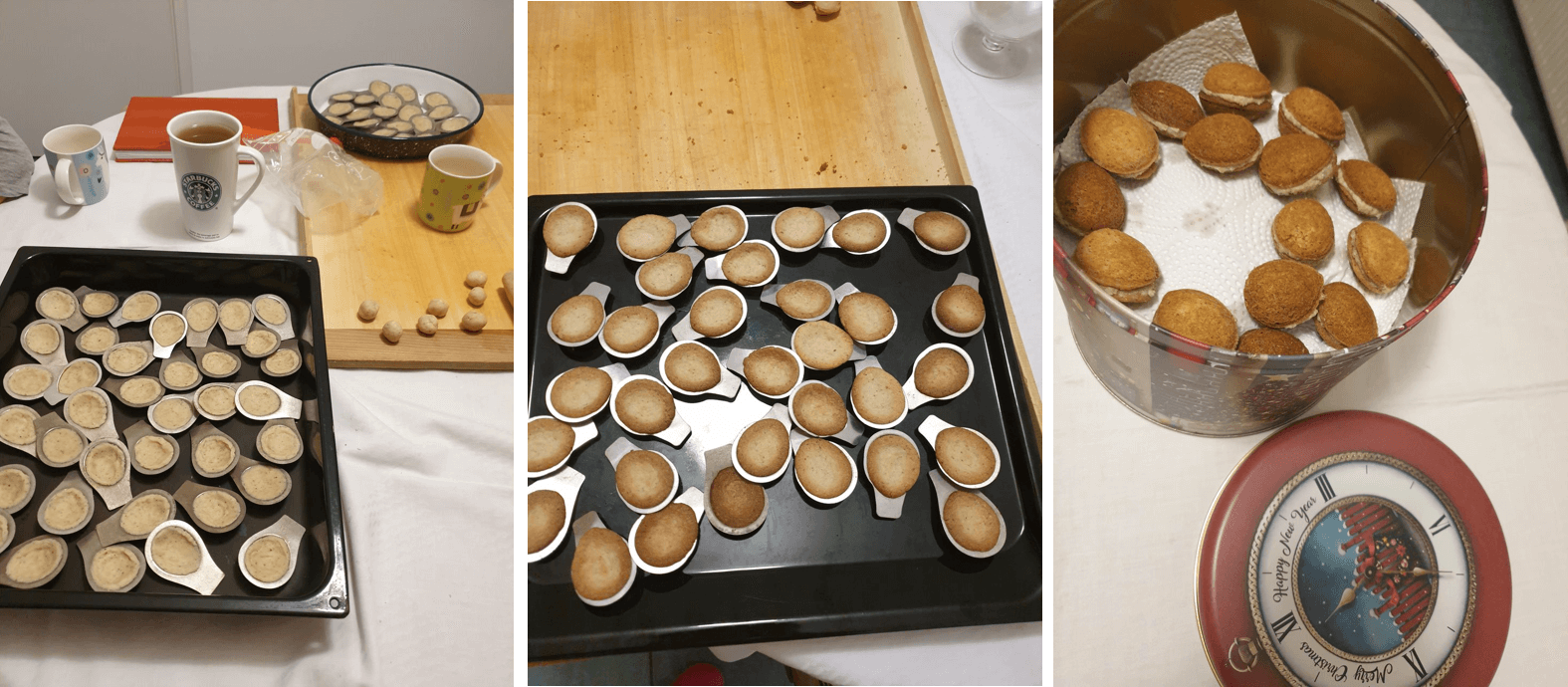
Ingredients:
Cookies
- 300 g flours
- 125 g butter
- 100 g lard
- 100 g ground walnuts
- 150 g icing sugar
Filling
- 100 g butter
- 200 g icing sugar
- 200 g ground walnuts
- 50 ml milk
Instructions:
1 Soften the butter and combine all the ingredients into a soft dough.
Grease the molds and dust them with flour to create a barrier, otherwise the cookies might stick.
Fill out the metal molds, leaving an indent in the middle (follow the shape).
Bake the cookies at 180 °C until golden (they will rise once they start baking - when they fall back down they're ready to go).
Unmold the cookies while they're still hot.
2 Soften the butter and combine the ingredients for the filling, using warm milk to bind them.
Fill out both halves and stick together to create walnuts.
* This is the traditional recipe, using traditional techniques and ingredients. The metal molds can be found at most Croatian markets, baking and vintage shops, as well as online. If you cannot find them, you can cut out any shape and use the same filling to create sandwich cookies of the same taste. Butter can be used instead of lard.
Pro-tip: orascici are best made up to 10 days in advance and stored in tin boxes.
For more, make sure to check out our dedicated Lifestyle section.
Exploring Croatian Recipes: How Slavonian Can You Go? Pogacice sa Cvarcima
November 20, 2022 - It is getting cold in Croatia, the days are long and dark, and the Slavonian soul is starting to crave the hearty food of its childhood. The recipe we’re bringing today is like a warm hug from your grandmother, with just a little dose of a heart attack. But it’s worth it. Time for pogacice sa cvarcima.
This is one of those recipes that you needed to start preparing last year. It is made with one of the most exceptional ingredients you can find in Slavonia. We have no idea if there is an official name or what it’s called in other parts of Croatia. In eastern Croatia, its name is drožda, which could be compared to caviar or truffles in how precious it is. It is made during the process of making čvarci (Slavonian pork cracklings). To make these little cubes of fun, the fatty bits of pork (just under the skin) are usually fried in a large pot until a lot of the fat separates, and the pieces have turned golden brown. During this process, crumbs will fall to the bottom. Čvarci are then taken out, the lard is strained, and whatever is left (the mentioned crumbs) is your sweet, sweet drožda. Traditionally, this was done to use every single part of the pig when meat was not as affordable. These days, drožda is in most households kept specifically for pogacice sa cvarcima.
Pogacice is a simple sourdough with a healthy dose of the naughty stuff. They remain a very occasional treat, best served with yogurt, kefir, or sour milk. Their appearance at parties and gatherings is always celebrated. You can try and only have one, but we promise you’ll be happy to forget about the calories for a couple more.
Ingredients:
1 kg of flour
2 eggs
2 tbsp of salt
250g of drožda (čvarak lard)
1 cube (20g) of fresh yeast
500 ml of milk
2 tsp of sugar
Preparation:
Start by developing the yeast in warm milk (250 ml), a tablespoon of flour, and two teaspoons of sugar. It is ready once it rises and doubles in volume.
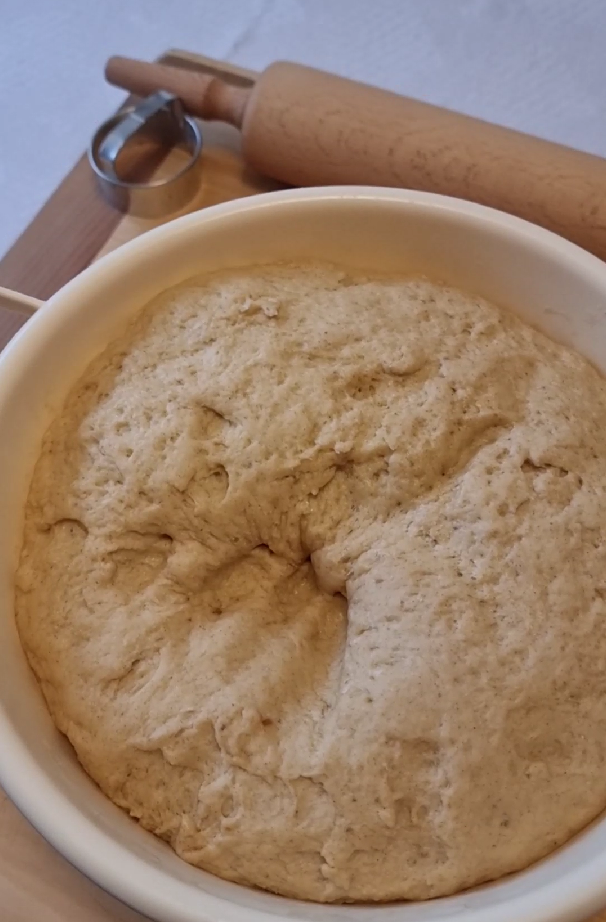
Add it to all the remaining ingredients and knead a soft dough. Leave that to rise in a warm environment for about 45 minutes. Again, it’s ready once it doubles in volume and becomes soft enough to leave indents which do not bounce back. Knead the dough once again and roll the whole batch out until it’s about one centimetre thick.
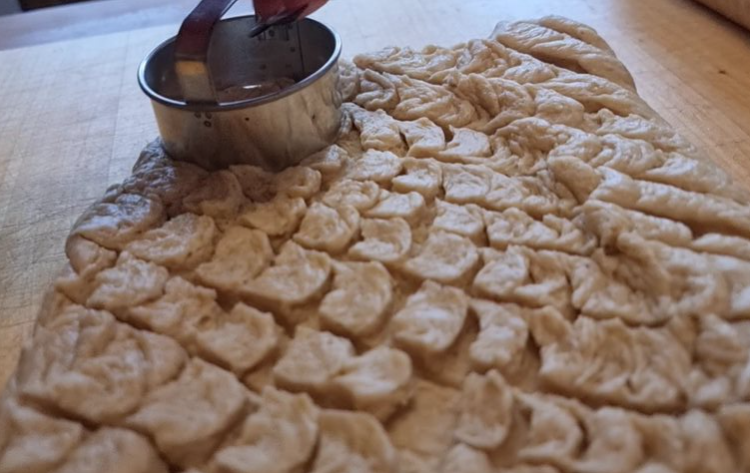
Before cutting into shapes, with a sharp knife cut parallel lines diagonally on the surface to create a textured top, adding a fun dimension to the pogacice. Use a round mold or a glass (diameter up to 5 cm) to cut them out. Bake at 180 °C / 356 °F for 20 minutes or until golden brown.
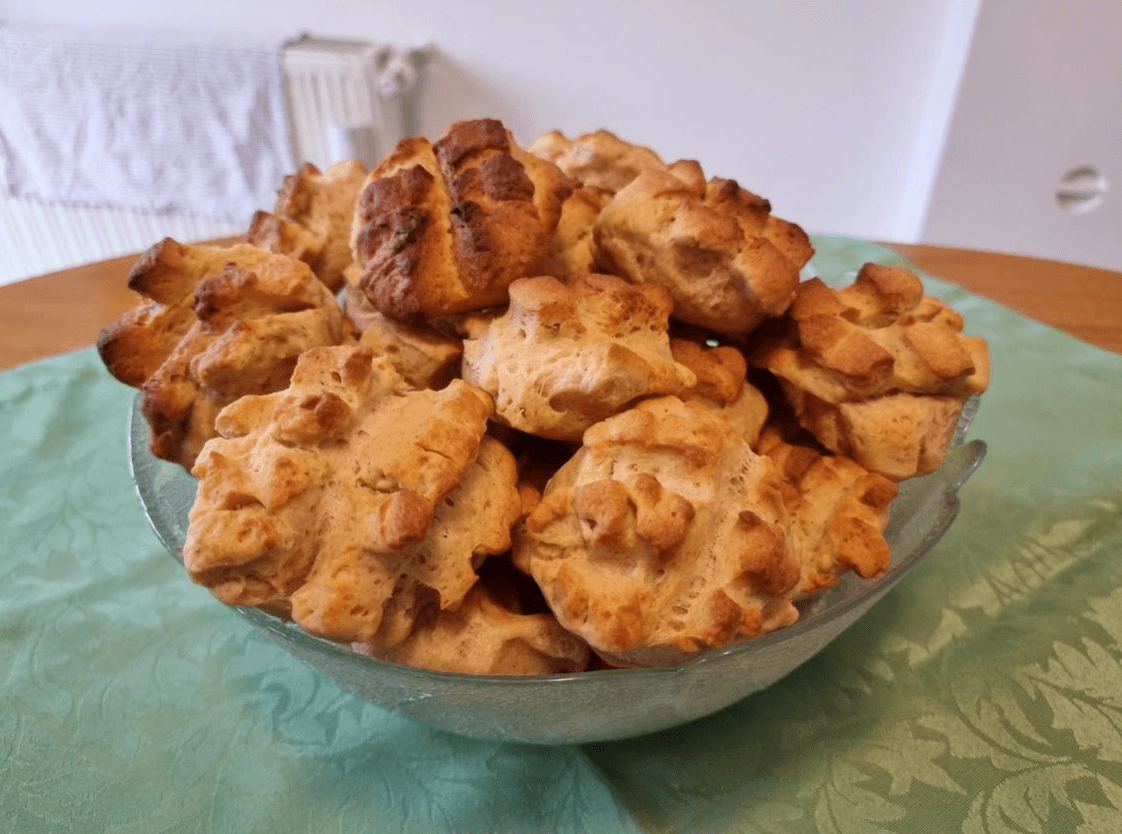
For more, make sure to check out our dedicated Lifestyle section.
Exploring Croatian Recipes: Queen of Autumn, the Apple Pie
October 22, 2022 - In this old new series, we shall endeavour to explore one of the best parts of living in Croatia - the food. We're bringing recipes for everyday and special occasion meals and desserts, which may be traditional or more recent but always delicious. It is only fitting to start with the queen of autumn, the ubiquitous apple pie.
If you don't have your apple tree in Croatia, you will probably know someone who does. The old "eat an apple" when you're craving something sweet is almost like a rule of life, and there's plenty of them to keep your doctor away. Much like zimnica, when the time is right, and the apples are ripe, you know your life will revolve around them for a few days. You'll want to ensure that you have stored the good ones, handed out the ones of acceptable quality, and used whatever was edible from the dodgy batch. Then ignore the good ones until it becomes more urgent to use them up. That's where the Croatian version of apple pie comes in.
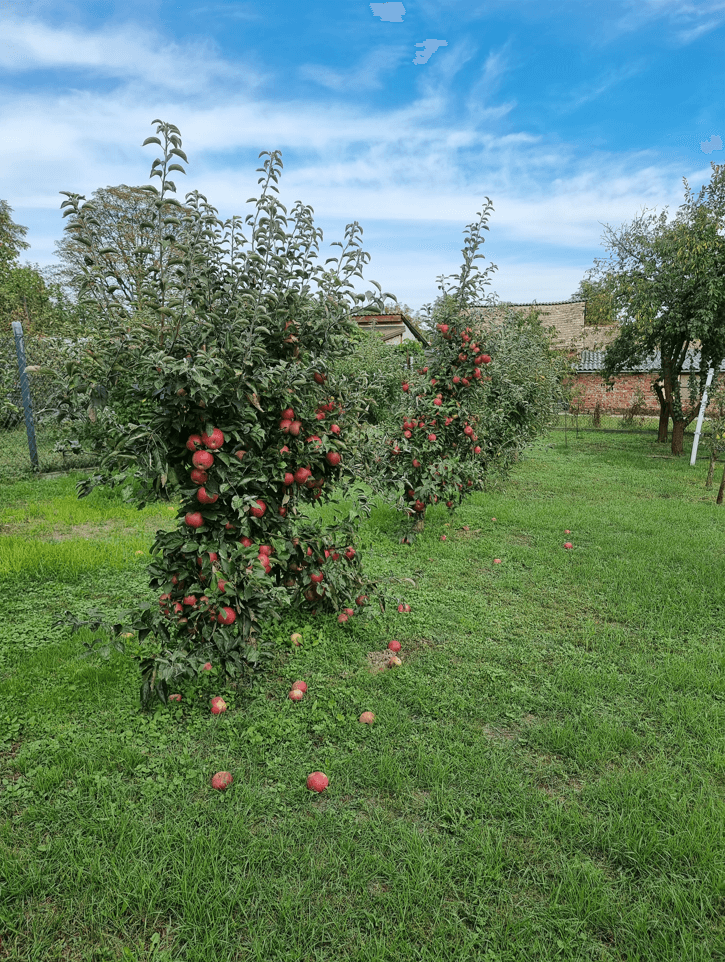
Of course, there is more than one recipe, depending on where you go and how old the grandmother is. But the one most people will know and love is the Lazy Pie (Lijena Pita). It owes its name to the fact that you can prepare it with just a few ingredients, a simple technique, and in a short amount of time - perfect, right?
For the crust, you will need the following:
- 400g of flour (all-purpose)
- 180g of sugar (generic white)
- 180g of lard (traditional Slavonian) or butter (unsalted, store-bought, sad)
- 2 eggs
- 1/2 pack (5g) of baking powder
- a dollop (1tbsp) of sour cream (optional, but the old ladies say it makes all the difference)
Filling:
- apples (measured with your heart, 7-10 should be plenty)
- sugar (measured according to how sweet your apples are, 1-2 tbsp per apple)
- cinnamon (optional, definitely measured with your heart)
- ground walnuts (optional, but desirable, a sprinkling of)
Decoration
- icing sugar
How to:
Start by peeling and grating your apples. You will leave them on the side for the juice to drain - for this; you can use a colander, a cheesecloth, or, let's be real, your hands. Drink the juice, and save the apples.
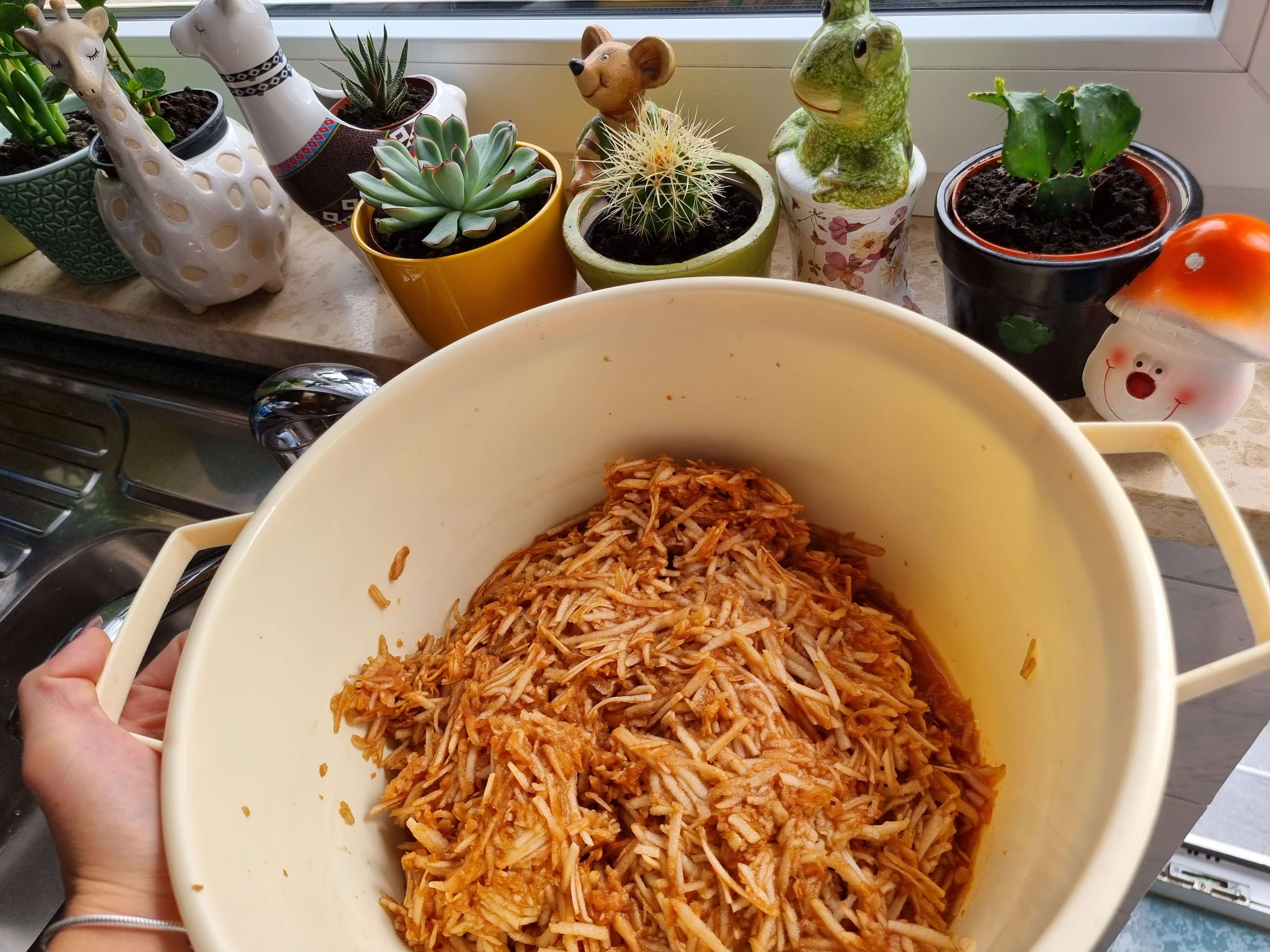
Next, you will knead your dough for the crust after combining all the ingredients. If you're using butter, we suggest crumbling it with your hands before adding everything else. No such problems if you're using lard, which is another reason it is superior to other fats. Knead into a homogenous ball and divide into two. Roll one out to fit your baking vessel. For the Croatian version, which is usually baked in a rectangular tray, you do not need to cover the sides, but if you want it to be a round pie, that could also work. Transfering your crust into the baking tray might be slightly clumsy since it tends to be soft, but don't worry if it breaks, just patch it up. No one will know.

Once your bottom crust is nice and comfortable in the tray, mix your filling of apples with sugar, cinnamon, and a couple of tablespoons of ground walnuts, whose purpose is to soak up any extra juice and prevent sogginess. Spread evenly on the bottom crust and roll out the other bit of dough to form your top crust. If you're feeling adventurous, you can try cutting out shapes or weaving your top crust, but the most common way is just a sheet in which holes would be poked using a fork. This is done to ensure your pie is free to breathe and let out any extra steam that could accumulate in the middle layer.
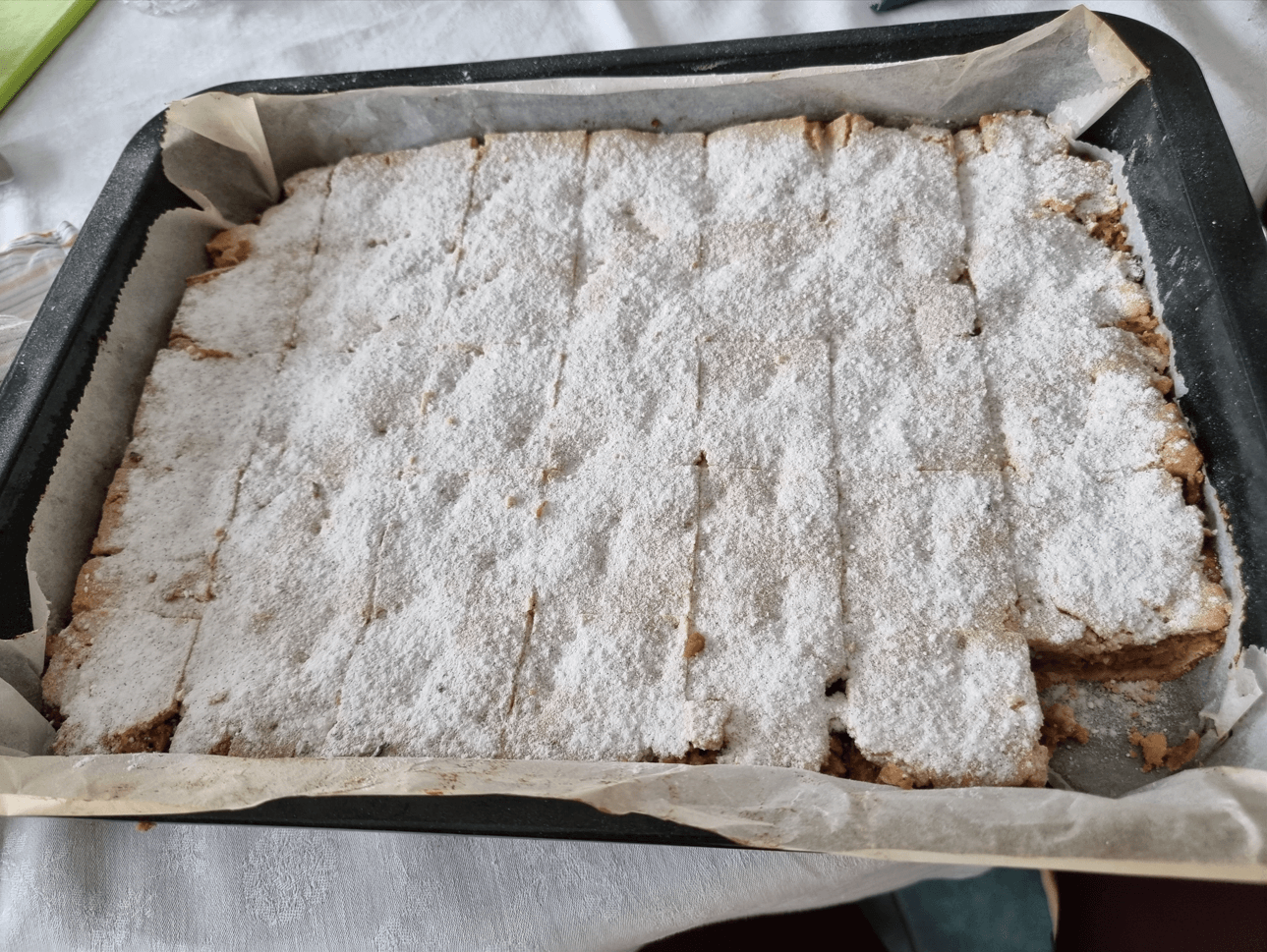
Bake at 180 °C / 356 °F for 30 minutes or until the crust is a fashionable golden brown.
Leave to rest and cool completely before dusting with icing sugar and cutting into squares. Best served on a crisp autumn day, with a cup of coffee and three hours of catching up.
For more, make sure to check out our dedicated Lifestyle section.
Sirnica: A Croatian Easter Delicacy
15 April 2020 - Sirnica or Pinca, is an indispensable part of any Easter table. Here’s a look at this traditional Croatian Easter delicacy and how you can try your hand at making your own!
Just a couple of days ago, I was having coffee with some colleagues and discussing Easter plans. A few were lamenting how far behind they were in their Easter baking, while others were exchanging recipes for all the delicious goodies, they were planning on making in the run up to Easter Sunday.
Since we were speaking of Easter treats, I simply had to ask “but, why is it when I translate Sirnica, Google tells me it’s cheesecake? But there’s no cheese in the recipe?”, “because it looks like cheese! With the shape and color”.
“Right! I think I’m going to try making it this weekend”, I said in full confidence of my amateur baking skills. A collective “noooooooooooooooooo!” ensued. “I don’t make it for Easter. No one does, only old ladies who have the time. Ma dai! So much work, almost 24 hours to finish it, waiting for it to rise and then kneading it, and rising again. No, no, I just buy it instead”.
What is Sirnica you might ask?

Before you know it, you've consumed the entire Sirnica. Image: Pinterest/Screenshot
Sirnica, as it’s known along the coastal regions of Croatia and Pinca, everywhere else, is a brioche-type sweet bread that graces every Easter holiday table. About a month before Easter, these orangey/yellow boules, topped with pearl or coarse sugar crystals, start lining the shelves of bakeries, cafes, and grocery stores.
At Easter, Sirnica is typically served along with a host of other delicious assorted kolači (sweet pastries). This is often accompanied by rich dishes like cottage cheese, eggs, ham and roasted lamb and fresh Spring vegetables like young onions and radishes, from the first harvests after Winter.
Rumor has it that Sirnica was created during the Venetian times, with some saying it may have even gotten its name from the dough resembling cheese during the mixing and kneading process, but the true origins of the confectionery remain unknown.
Historically, Sirnica would be made on Maundy Thursday, the day before Easter Friday commemorating the Last Supper of Christ. Families would then wrap them in cloth, letting the Sirnica rest before taking a loaf to Sunday Mass for it to be blessed and shared with the family after.
Today, each family has their own recipe, family secrets passed down through the generations. If you’d like to make your own, here’s a recipe you can follow from the book “Sweet Korčula” by Mrs. Franice Tasovac and bring a small part of Croatia's Easter traditions into your own home.
Sretan Uskrs everyone!

Their signature hue comes from the large quantity of eggs this recipe calls for. Image: Pinterest/Screenshot.
Ingredients - makes 6 Sirnica
6 egg yolks
3 egg whites
250 g white sugar
8 g vanilla sugar
300 ml of milk
120 g of fresh yeast
1½ teaspoon salt
250 g butter
1.2 kg of flour
1 lemon peel
2 orange peels
1 tablespoon rose rakija or brandy
Topping
1 egg white
1 tablespoon rose rakija or brandy
50 g Pearl sugar or white sugar
Preparation
- Melt the butter in a saucepan over low heat.
- Crumble the fresh yeast with milk, stir in 200g of flour and allow the mixture to double.
- Mix the eggs with both sugars and salt, whisk until the mixture becomes frothy.
- Add brandy, lemon zest and orange zest to the egg mixture.
- When the dough has doubled, add in the melted butter and egg mixture. Start kneading the dough with your hands, gradually adding the remaining 1kg of flour. Old housewives say that you should be very angry before you start making dough and then vent your anger by kneading the dough with your hands.
- Add the flour until you have a plush, brioche-like dough that is not too stiff. You might not use the full 1kg of flour. Cover the bowl with the dough and let it double.
- Once doubled, knead the risen dough and divide it into six pieces. Shape each piece into a ball and leave them to rise on a sheet lined with greaseproof paper for one to two hours.
- Preheat the oven to 150 degrees celsius. Before baking, use scissors to cut a cross or a Y-shape into each dough ball and bake for 40 minutes.
- Using a fork, mix a little egg white with rakija, and brush the Sirnica towards the end of baking.
- Sprinkle with beaten sugar and return to the oven for a couple of minutes to allow the coating to dry.
Traditional Croatian Recipes: Jota
February 10, 2019 — One of coastal Croatia's favorite winter warmers, jota is a traditional stew made with sauerkraut and/or sour turnip, kidney beans, potatoes, pork sausages, and often a variety of smoke-cured pork meat like belly, ribs, shanks, or trotters.
This hearty stew is typically flavored with onion and laurel leaves, though some add even marjoram or thyme, while most of its rich flavor comes from the so-called pešt or zaseka; a mash of bacon fat, garlic, and parsley.
Jota is a staple in Croatia's northwest and an easy beginner friendly one-pot dish which you will have no problem making. Here is the basic recipe:
Ingredients
1 onion, diced
200 g beans*
500 g sauerkraut or sour turnip, finely shredded
200 g dried pork meat or sausages
2-3 potatoes
4-5 laurel leaves
3-4 tbsp pešt/zaseka
3-4 tbsp olive oil or lard
salt and paprika; to taste
1 tsp peppercorns
Directions
1) In a large stockpot or Dutch oven heat oil or lard over medium-high heat until hot. Add chopped onion and sautée for about 5 minutes or until tender, golden-brown.
2) Try your sauerkraut (and/or sour turnip), and if you find it to be too tart, rinse it with water before you add it to the pot.
3) Then, add laurel leaves, sweet paprika, salt, and peppercorns. Add dried pork meat and beans. Cover with water and continue cooking on medium heat, half-covered.
4) After about 45 minutes of cooking, add cubed potatoes and pešt/zaseka. The latter will add not only thickness to your stew but also an incomparable richness of taste.
Lastly, stir well and let everything simmer together for another 30 minutes. Your jota is finished when the potatoes are cooked.
Dobar tek!
*Beans: if you're using dried beans, you will need to start making your jota the day before because they need to be soaked in cold water for at least 12 hours before they can be cooked. Alternatively, you can use canned beans and simply add them halfway through cooking time.
Stay tuned for more recipes by following TCN's gourmet page.


